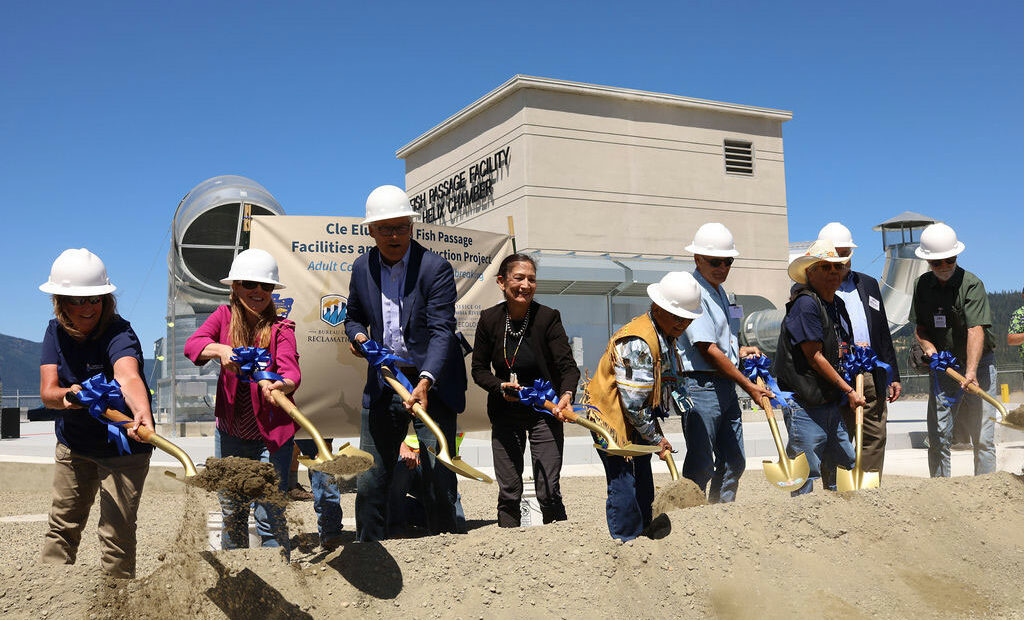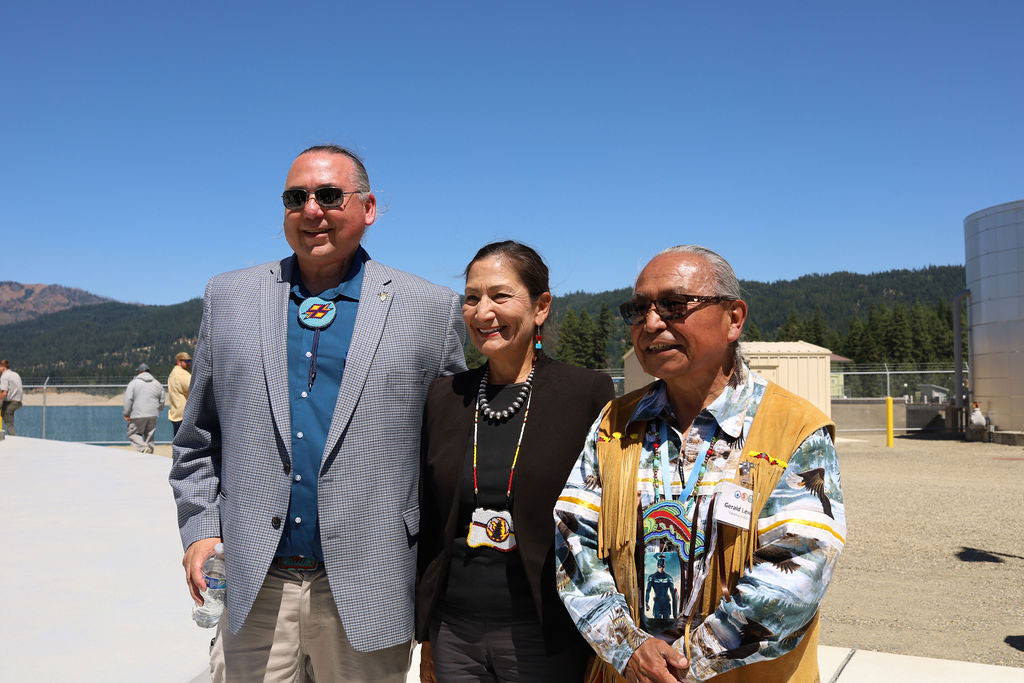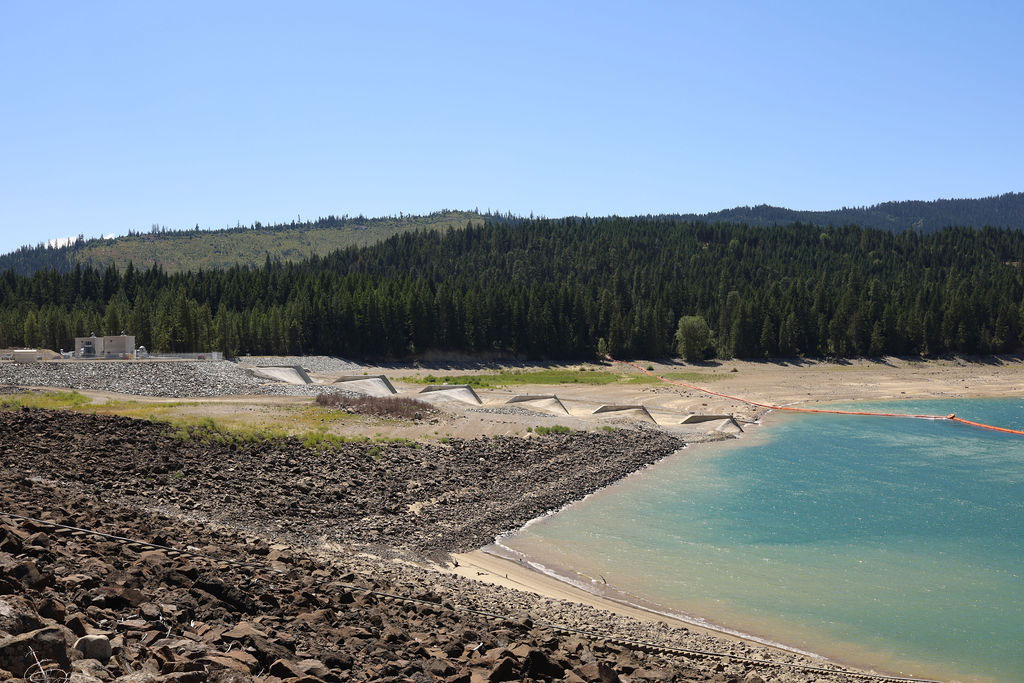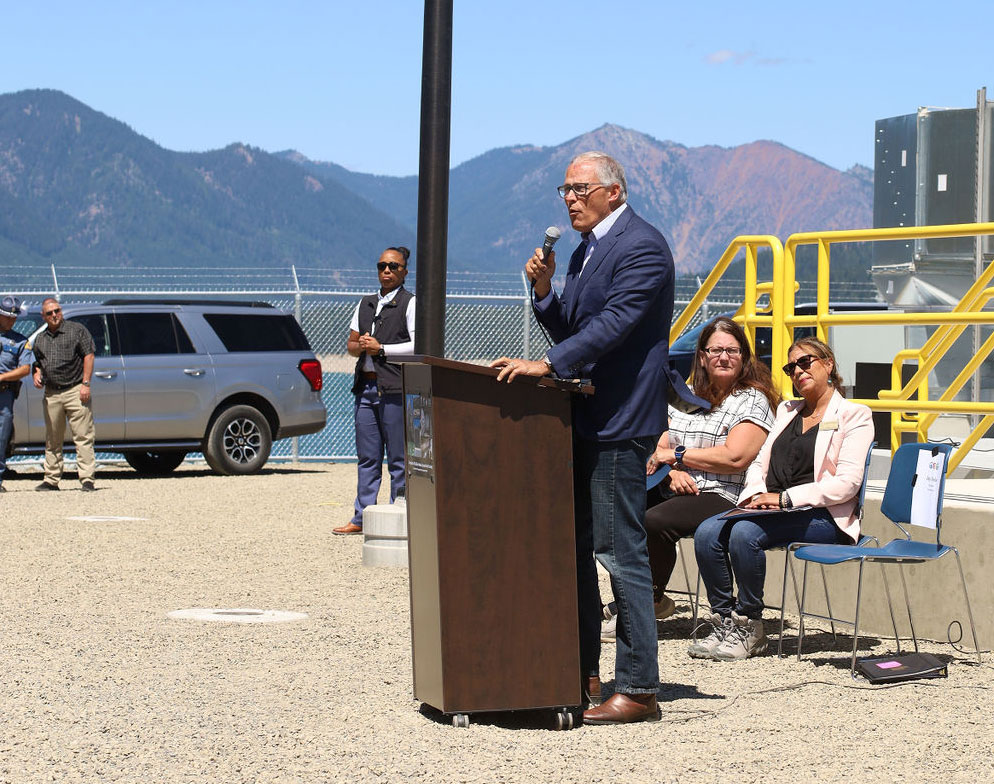
‘We’re just getting started’ | Haaland highlights major salmon recovery effort with $16M investment
Listen
(Runtime 1:07)
Read
U.S. Secretary of the Interior Deb Haaland celebrated with state, local and Indigenous American tribal leaders the success of federally funded restoration projects, including the opening of almost 30 miles of critical habitat for steelhead populations above the Cle Elum Dam.
“These facilities will help honor, protect, and restore culturally important fish populations for the Yakama Nation, protecting and restoring tribal treaty rights and trust resources. I’m so excited and very optimistic about the incredible work and incredible partnerships happening in this basin,” Haaland said.
Chinook salmon, sockeye salmon, steelhead, and bull trout populations have declined in the Yakima River Basin, largely due to dam construction that blocks fish migration for spawning. Salmon have been unable to spawn between the lake and the river for almost 100 years.

According to the Department of Interior and the Columbia-Cascades Bureau of Reclamation, the facility has a one-of-a-kind solution to reintroduce salmon to areas blocked by infrastructure. The project will restore the once-rich sockeye salmon run through the river.
The facility includes a helix fish passage system that allows fish to travel downstream at any water level from Cle Elum Lake through the dam and into the Cle Elum River. The passage facility will be fully operational in 2026.
“It has truly come full circle,” said Yakama Nation Tribal Chairman Gerald Lewis.
Lewis has a long history in his role preserving Washington salmon. In the past, he worked at the Yakama Nation fisheries program, which would drive trucks from the Roza Dam to the Cle Elum Reservoir. He said he remembers finding empty nets and seeing salmon laying on the cement outside the holding pond because they couldn’t make the jump due to low water levels.

Tribal and nontribal members gathered at the groundbreaking to commemorate the once-abundant salmon passage.
“Our goal is to see work like this, working with communities to help solve the salmon problem. It makes you think of some of our elders that have gone on and that provided us with the leadership and push to get these things done and to see that they’re celebrating with us right now,” said Philip Rigdon, Superintendent of Yakama Nation’s Natural Resources Department.
“The Yakima Basin Integrated Plan truly is a model for our future in how we balance conservation with water supply and economic needs by bringing together tribes, farmers, business owners, recreationists, and community members around a set of common goals and a common purpose,” Haaland said.
Currently, there is a pool of sockeye salmon blocked from reaching Okanagan Lake by hot water. Sockeye are stacking up at the mouth of the Okanogan River and waiting rather than entering the tributary to get to their spawning grounds across the U.S.-Canada border.

At the groundbreaking of the juvenile fish facility, Haaland announced that $16 million in federal funding would go towards projects in the Yakima River Basin to solve lower water levels and improve drought resilience, which will restore the habitat of threatened salmon species.
“We’re just getting started,” Haaland said.
The Inflation Reduction Act’s investment in drought resilience in the Yakima River Basin is the largest climate investment in history. The Biden-Harris administration has already invested $40 million in the Yakima River Basin through the Bipartisan Infrastructure Law, which includes $7 million to raise the Cle Elum reservoir’s capacity and further fish passage in the region.

Gov. Jay Inslee was there to celebrate with other local and tribal leaders. In 1993, Inslee introduced the Yakima River Enhancement Bill to U.S. Congress, establishing the integrated Yakima salmon recovery plan.
“As the salmon go, so go we. We are now going to give them a shot,” Inslee said.
There are at least 20 projects underway with other fish passage and water management projects through the Climate Commitment Act.
“If you take one thing from my comments, I hope you’ll remember that the Climate Commitment Act is an instrumental source so we can do what we’ve done here,” Inslee said. “I consider this a matter of life and death. We are doing bypass surgery to give our salmon the gift of life.”
In November, voters will decide if the Climate Commitment Act will continue. Initiative 2117 would repeal the CCA and prevent state agencies from implementing any programs involving the trading of carbon tax credits, halting efforts to reduce greenhouse gas emissions through carbon trading.
Reneé Diaz may be contacted at diaz@wenatcheeworld.com. Collaborative reporting by The Wenatchee World, NWPB and Murrow College of Communication Newsroom Fellowship
















